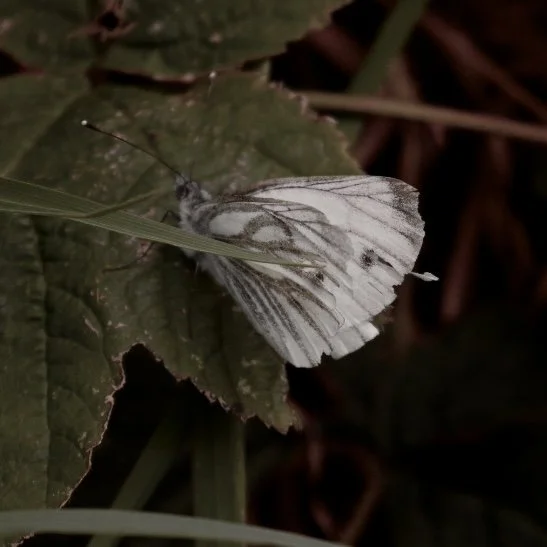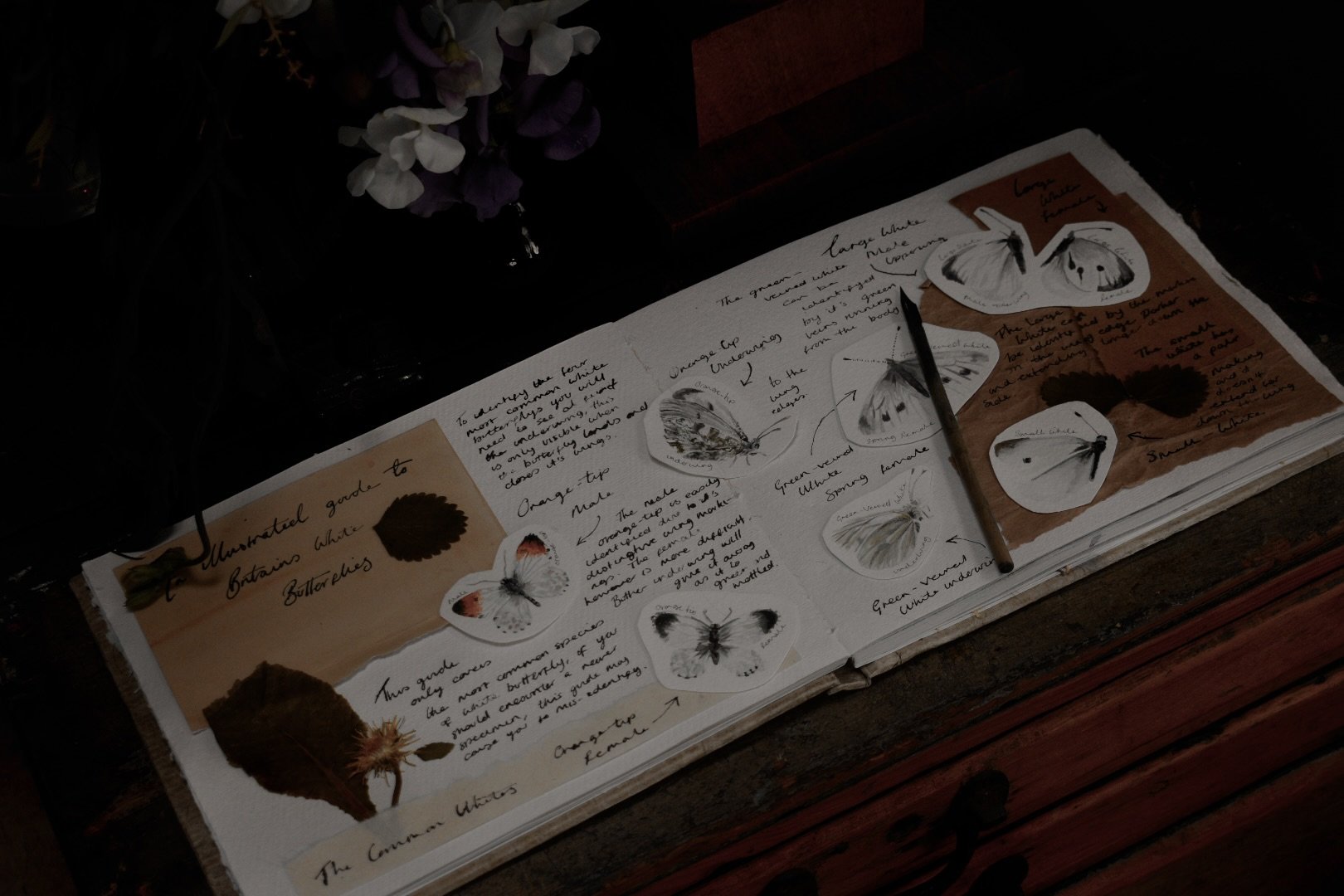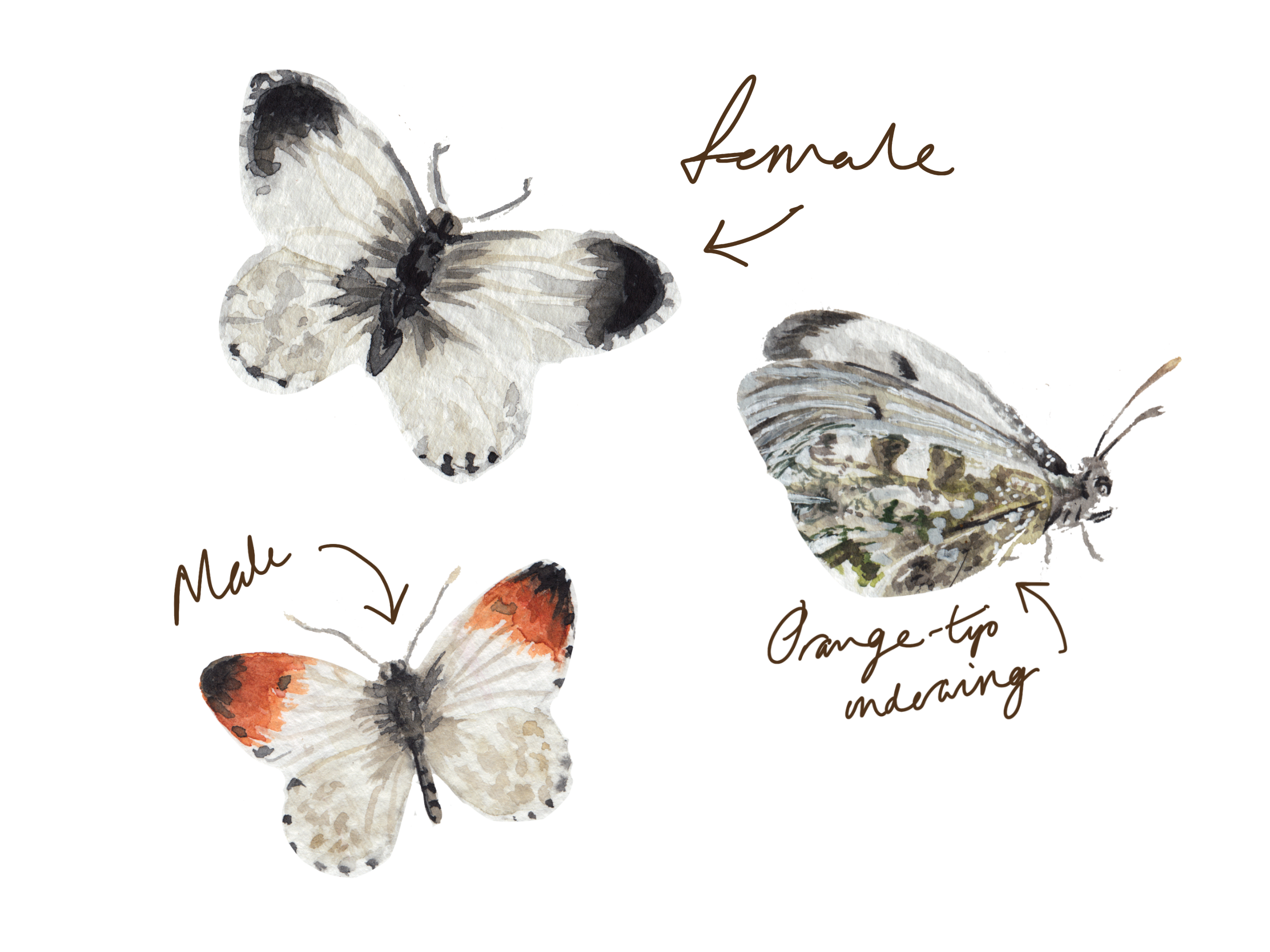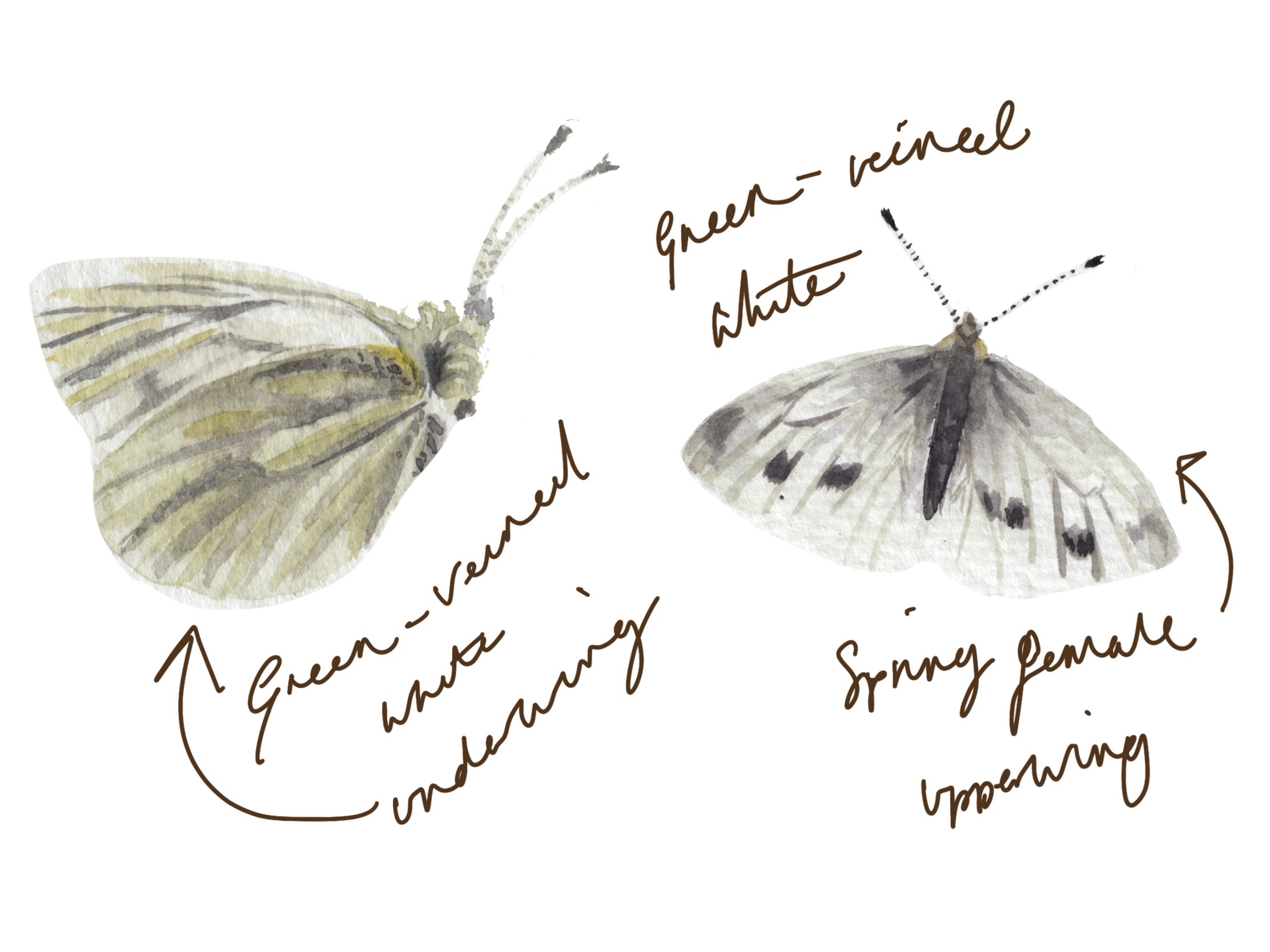How to identify - white Butterfflies
Identifying the Common White Butterflies
This post will only be a guide to identifying the most common types of white butterfly. Rare species are not covered and could create a possible mix up if you encounter one, although chances are, what you’re seeing is one of these four. First of all, to identify correctly you will need to see the underwing. (This is on show when the butterfly rests and closes its wings).
Orange-tip Butterfly
This Butterfly is most commonly found in spring and is one of the first to emerge. The male is distinct and can be identified in flight due to its orange wing tips. The female however is trickier, her forewings look much like the other whites so you will need to see her standing still with her wings closed. An Orange-Tip Butterfly will have a mottled green underwing which I think looks a little like army camo.
Green-Veined White
The forewings of the Green Veined White Butterfly are similar again to the other whites but the underside of the wing has prominent green veins branching out from the body to the tips of the wings.
Large & Small White butterflies
When you’re looking at the hindwing of a butterfly there can be three possibilities. Two are mentioned above, but if you see a butterfly with just a plain creamy white underwing with no obvious markings then you’ve seen either a large or small white. Now don’t be fooled into thinking the bigger must be large and a smaller butterfly a small white. Although the large tends to be on the bigger side they can all differ in size just like we do. What you need to look for is the dark markings on the end of the forewings. A dark grey / black marking extending down the length of the wing indicates a Large White. A Small White has a shorter wing marking that is often a paler grey. The spots can differ between broods, species and male and female so aren’t a helpful indicator.






